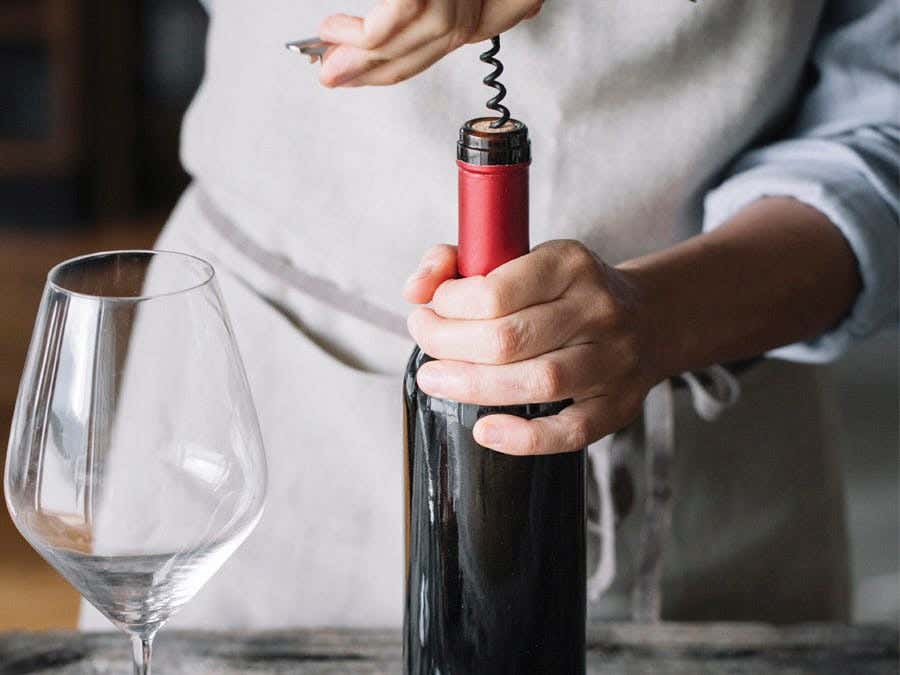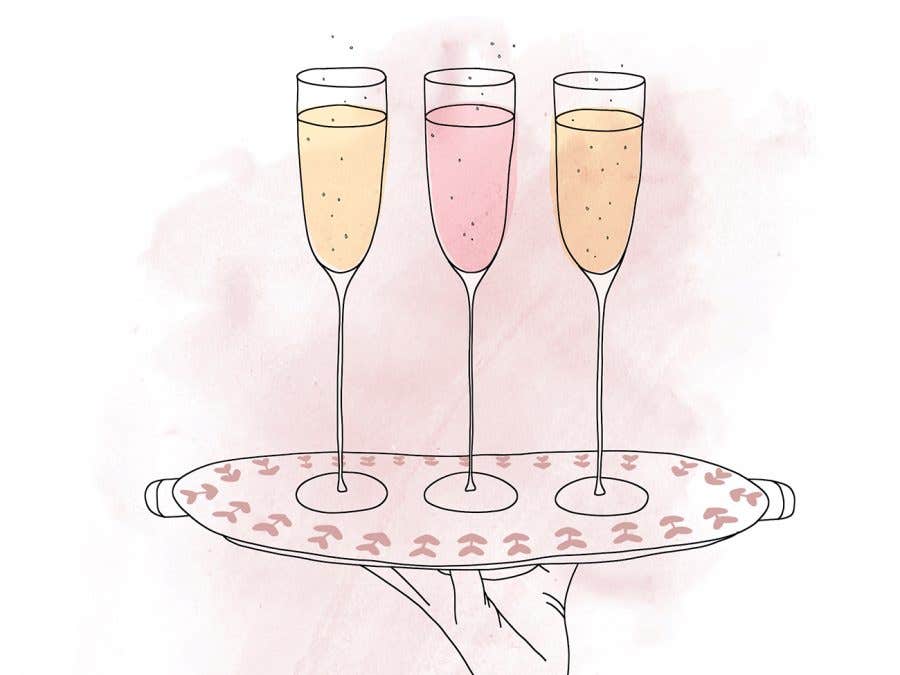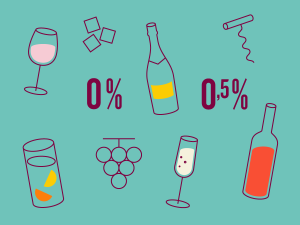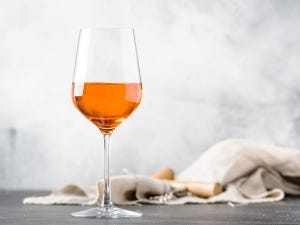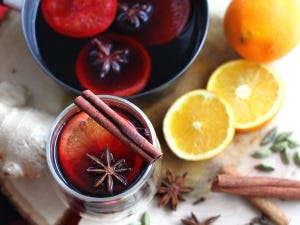Champagne is quick
to go to your head
Yes, because we often drink it on an empty stomach. Plus, because it is so bubbly and fresh, we tend to throw back two or three glasses fairly quickly. The bubbles (carbon dioxide) in champagne accelerate the passage of alcohol through your bloodstream.
The moral of the story? Remember to open a bag of chips after popping the cork—no joke. The two pair very well together according to well-known sommelier, Véronique Rivest, who says that champagne goes great with almost anything that is salty and high in fat.
Champagne should be enjoyed as soon as it is bought
Yes and no. It is rare that champagne doesn’t deliver right away on the taste front. And this is true of even the most prestigious labels. This is partly due to the fact that most champagne is aged two years, sometimes more, before being sold to the stores. However, in some cases (more often than we think) champagne—especially vintage champagne—gets better with age. This is because some characteristics, such as acidity and asperity, become smoother over time.
Champagne and Marie-Antoinette’s bosom?
Some people say that the very first champagne glass was moulded from the breast of Marie-Antoinette, wife of Louis XVI. Others, however, believe it was modeled on the breasts of Louis XV’s favourite mistress, the Marquise de Pompadour.
A legend, perhaps, but two tall tales that are… royally sexy!
From Champagne-Ardenne to Montreal with love!
France’s Champagne-Ardenne region is the source of many key figures in French North American history: in 1606, Jeanne Mance, considered to be Montreal’s co-founder, was born in that very region. For Montreal’s 375th anniversary, why not celebrate with wines from this famed area?
The champagne widows
The world of wine has often been dominated by masculine figures. However, in the 19th century, two young women changed the face of champagne forever. In 1805, when her husband unexpectedly passed away, 27-year old Nicole Clicquot (born Ponsardin), decided to take over the family business. Resilient and brilliant, the woman often referred to as “la grande dame de Champagne” managed to make her product known throughout the world. In fact, she squashed the competition when she managed to conquer the Russian market after the Napoleonic Wars.
In 1868, it was Louise Pommery’s turn to take over her deceased husband’s business. And her success—and ruse—were both undeniable! Outraged by rumours that her estate was going bankrupt, she anonymously purchased a rare (and very costly!) piece of art at an auction: Millet’s The Gleaners. In awe, everyone stood wondering who could have bought such an expensive piece, when POP! Louise Pommery revealed herself as the buyer. She then turned around and donated the masterpiece to the State, proving once and for all that her business was thriving. Talk about a marketing genius!
Brut? Sec? Demi-sec?
It all depends on the amount of sugar that was used in its production. Here is a list (valid as of 2010) of the categories of champagne and their sugar levels:
EXTRA BRUT between 0 and 6 g/l
BRUT less than 12 g/l
EXTRA DRY between 12 and 17 g/l
SEC between 17 and 32 g/l
DEMI-SEC between 32 and 50 g/l
DOUX more than 50 g/l
Champagne vs. bubbly: what’s the difference?
Because Champagne is a classified AOC (“appellation d’origine controlee”, meaning controlled designation of origin) it must come from the region after which it is named and be produced according to traditional methods. Sparkling wines, which are often very delicious, can come from anywhere around the world. Some are produced according to traditional methods, but many are not, resulting in a product that is less refined and perhaps not as good.
Avoid bottles with artificial carbon dioxide. Your head will thank you!
A bottle that weighs 54 kilos
That’s the weight of a full Melchizedek. Melchizé-what? It is the name of an Old Testament king, worn by the largest bottle of champagne on the market today. It can hold 30 liters, or the equivalent of 40 bottles. This is double the Nebuchadnezzar (15L) and five times the Methuselah (6L).
Champagne cocktails
There are so many delicious champagne-based cocktail recipes out there. Here are three for you to try:
Barbotage: Champagne, orange juice, lemon juice, grenadine
Bonaparte: Champagne, Curaçao, grapefruit juice, mandarine liqueur, grenadine
Mojito royal: Champagne, lime, mint leaves, rum, sugarcane
Honourable mentions: Fashionista, Socialite, Player and Bombshell, four drinks created by Moët & Chandon in honour of Sex and the City’s Carrie, Miranda, Samantha and Charlotte.
Colouring outside the line
Champagne is made mainly from three grape varieties: Pinot Noir (38% red)—which is also used in the production of reds—Meunier (33% red) and Chardonnay (28% white).
So how can a wine as white as champagne be made from so many red grapes? Because the grape is pressed as soon as it is picked, the juice doesn’t have time to take on a red tint! Four other grape varieties (all white grapes) are also permitted in the production of champagne (although their presence is mostly anecdotal). They are: Pinot Gris, Pinot Blanc, Arbanne and Petit Meslier.
Sources
- Interview with Guénaël Revel, sommelier specialized in champagne and author
- Les catégories de mousseux et de champagnes : Extra-Brut, Brut, Extra-Dry, Sec, Demi-Sec et Doux by Guénaël Revel
- BROUILLET, Chrystine et REVEL, Guénaël. Couleur Champagne, Éditions Flammarion Québec, 2006, 159 p
- La Tour Eiffel a trop bu, Mylittleparis.com
- REVEL, Guénaël. Vins mousseux et champagnes, les 500 meilleurs effervescents du monde entier, Éditions Modus Vivendi, 2007, 256 pages.
- Website of the Office de tourisme de Champagne-Ardenne
Related Posts
-
Read more
SAQ shelves are lined with more than 300 wines and spirits produced abroad and bottled here, a process that has a positive impact on the environment and workforce in the province.
-
Read more
In recent years, Prosecco DOC (Denominazione Di Origine Controllata) sales have dizzying new heights. Read on to learn more about the accessible bubbles adored the world over.
-
Read more
Bubbly’s rising popularity has resulted in a wide variety of bottles to choose from. Here’s a handy guide to finding the one that’s right for you!
 Access to SAQ Inspire personalized services and store inventories are unavailable at the moment.
Access to SAQ Inspire personalized services and store inventories are unavailable at the moment. Free in-store delivery with purchases of $75+ in an estimated 3 to 5 business days.
Free in-store delivery with purchases of $75+ in an estimated 3 to 5 business days. 


